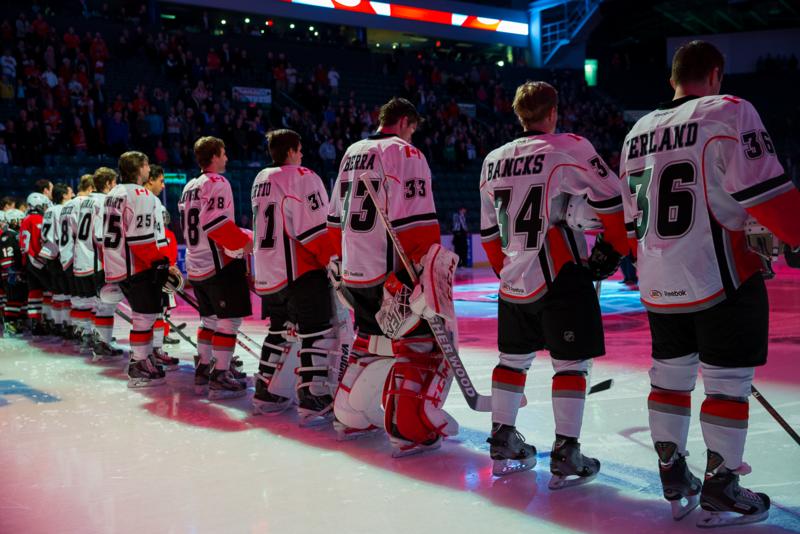By Tim Ubels (Contributor) – Email
Print Edition: October 23, 2013

After the departure of Quintin Laing, Heat captain for the past three seasons, in the offseason, the team has yet to announce a replacement to fill the key role.
The process of naming a team captain is a measured one, and Heat management seems to understand that the prestige that comes with wearing the “C” has to be earned, otherwise players may end up resenting the decision. Jealousy is a very real thing among athletes, and that’s never a good way to get a team to work together and be successful at the AHL level.
Past seasons have seen the Heat players vote on who will be named captain, sometimes playing almost a month of hockey before deciding on one player. Last season the Heat went captainless for three weeks before the players agreed to name Laing captain for a third straight season. This process might seem tedious to some, but it allows the players to form bonds and gain familiarity with each other before selecting a leadership group for the season. With such a young team and only a handful of players returning from the 2012-13 lineup, the delay seems appropriate.
In the meantime, the club named forwards Paul Bryon, Carter Bancks, and Greg Nemisz alternate captains to start the season. They have all been staples of the Heat lineup the past few seasons, and these veterans will be considered frontrunners for the captaincy if the team decides to hold a vote this season.
While most of the major team sports in North America use team captains as a form of leadership, the role of captain in professional ice hockey is distinctive. In American football, teams will often have multiple team captains, but in ice hockey, there is a tradition of naming one player, and one player only, team captain.
The honour of having the “C” stitched on their sweater is also more significant in ice hockey because it doesn’t automatically go to the superstar or the team’s most marketable player. Very frequently in hockey, the team captain isn’t the fastest skater, the team’s point leader, or its toughest player. But what he lacks in pure skill, he makes up for in leadership.
By holding a vote on the vacant captaincy a few weeks into the season each year, Heat management allows the players to make a heartfelt and careful decision on which player has displayed the right kind of leadership thus far.
Leading by example is undoubtedly the single most important characteristic of a great hockey captain. Whatever style of game is supposed to be played, it is the captain’s duty to set an example by following the system, and the team’s to follow his lead. Whether the team plays an up-tempo or physical style of game, it is the captain’s responsibility to implement the team’s game plan both on and off the ice.
The captain also acts as the voice of the team, speaks to players who are struggling, defends their actions publicly, and is the only player officially recognized as being able to talk to game officials about rulings on the ice. These responsibilities require a level of confidence that most players just don’t have.
Perhaps it’s best for the Heat to take its time selecting a new leader. The job is about trusting your teammates and respecting each other’s opinion, and though this young team has shown moments of teamwork and togetherness, it’s still a work in progress, full of rookies and new acquisitions. The constant challenge of building a team out of two dozen personalities makes the job of captaining a hockey team not only pressure-filled, but also highly rewarding.


